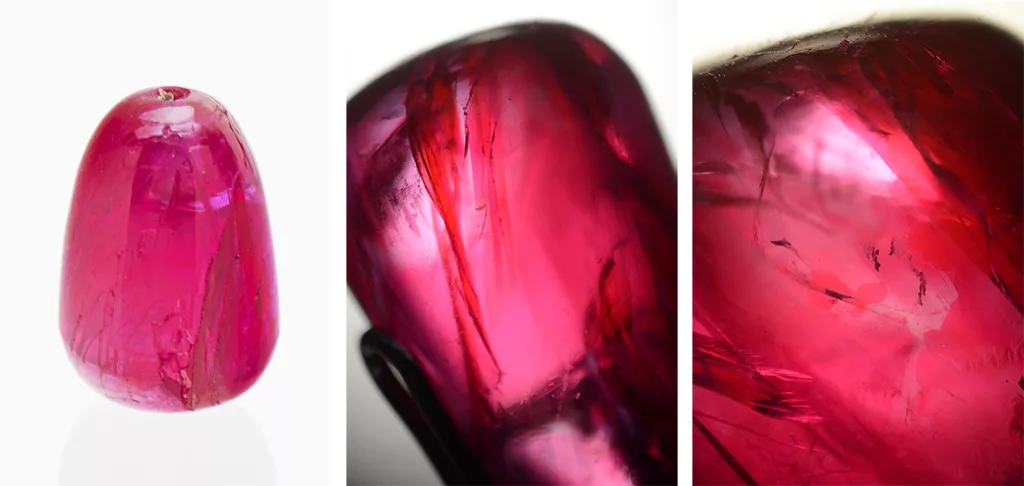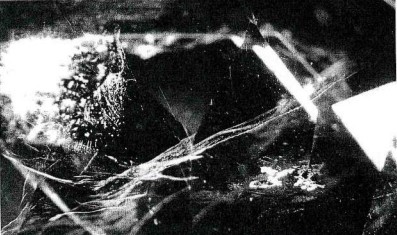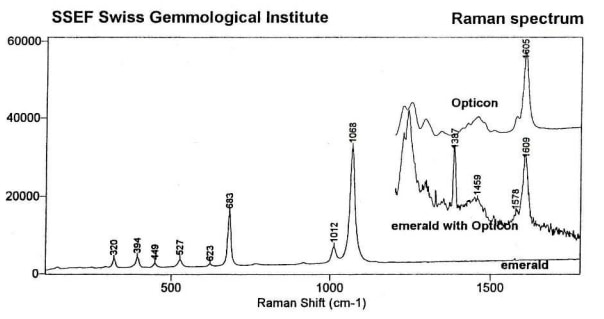
Bachelor thesis on fissure filling substances in emeralds
By Dr. M.S. Krzemnicki, first published in Facette 29 (May 2024)

Fissures in emeralds are commonly filled with colourless substances such as oil, wax, or artificial resin to modify and enhance their clarity. This treatment is not new and has been known for many centuries, specifically with oil. All of these filling substances are prone to dehydration and alteration over time, with the consequence that the previously hidden fissures become again visible, possibly with more prominence, as the remaining residues of the filler substances can become opaque whitish to brown over time (Figure 1).
To better understand this ageing behaviour and the alteration of filling substances, we started a bachelor research project in collaboration with Micha Baur, student at the University Basel. Using a wide range of filler substances (different oils, resins, and paraffin wax), he analysed and monitored the changes in FTIR spectra and Raman spectra of these initially fresh substances over time. To mimic ageing behaviour, the filler samples were heated over several different periods of time, and after each step fully analysed by FTIR and Raman spectroscopy. A second focus of this project was to study the effect of polymerization and mixing of filler substances on FTIR and Raman spectra (Figure 2).
We would like to congratulate Micha Baur for his excellent bachelor thesis. The results of this study are not only very useful for our laboratory but will also be published in a gemmological journal in the near future.



